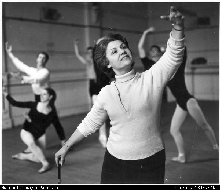Keith Byron 1930 - 2002

Keith Byron was regarded as a legend amongst his peers. He had partied and played touch football with John F. Kennedy and the rest of the Kennedy clan in the US and he had carved out an enviable international reputation, photographing British royalty, a succession of US presidents and the cream of Hollywood stardom on location for some of the world's leading newspapers and magazines. He had also taken thousands of pictures of some of the world's most beautiful women for magazines such as Esquire. In short, he was present at a great many events worth recording in the late twentieth century and leaves behind one of Australia's most impressive collections of press photography - thousands of pictures, some quite extraordinary, which will remain his lasting legacy.
Born in Bondi in 1930, Byron began his newspaper career in the then traditional way; as a teenage copy boy. After his cadetship he quickly began to make a name for himself on the Daily Telegraph as one of Sydney's more spectacular press photographers.
It was during this period that he was assigned to photograph the young Hollywood actor, Peter Lawford, who had come to Australia to make the film Kangaroo. Lawford had brought with him one of the first Malibu surf boards seen in Australia. Byron was then a keen surf lifesaver and board rider. The two clicked immediately and formed what was to be a lifelong friendship.
In the mid-1950s Byron left Australia to further his career overseas. He worked with United Press International and other leading agencies, spending much of his time in South America. One of his biggest coups was in Argentina where he arrived during the upheaval following Juan Peron's deposition. His pictures of Evita Peron's extensive wardrobe were to be used decades later in designing gowns used in the Andrew Lloyd Webber musical Evita.
In the US he called to see his friend Lawford, with whom he had been corresponding since his Australian visit. Lawford introduced him to the Kennedys at Hyannisport. Byron became friendly with both J.F.K. and Bobby Kennedy, hinting to friends many years later that he knew more than he cared to reveal about the death of Marilyn Monroe.
He would also tell friends that he was possibly the only person in the world to have played football with both John Kennedy and Che Guevara. He said he had played alongside Guevara in a Buenos Aires rugby team long before Guevara became a world figure.
Although John F. Kennedy was the US president Byron photographed most - sometimes simply for his own happy snaps - he had also taken pictures of presidents Dwight Eisenhower, Richard Nixon, Bill Clinton and Ronald Reagan, whom he had photographed when he was a film star.
With Lawford's help, pictures of the Hollywood greats became something of a speciality. Early success on the set of The Magnificent Seven in Mexico, with pictures of cast notables including Yul Brynner and Steve McQueen, had given him an excellent start.
He was subsequently to find a ready market and achieve a considerable reputation among media companies hungry for news and pictures of celebrities.The stars in his final portfolio included Monroe, Audrey Hepburn, Robert Mitchum, Kirk Douglas, Burt Lancaster, Jane Wyman, Rock Hudson, James Stewart, John Wayne, Lana Turner and Jack Lemmon, as well as the revered Britons, Laurence Olivier and Vivien Leigh.
Byron also built up a considerable portfolio of international sports stars and was proud of the fact that he had taken widely published pictures of royalty, including the Duke and Duchess of Windsor.
On his return to Australia he worked for several newspapers, including the Sydney Morning Herald. In his latter years, Byron lived quietly on the Gold Coast, occasionally working as a freelance photographer. At the time of his death in 2002 he had been planning a visit to the US to seek out many of his pictures still held by Hollywood studios for inclusion in a book. He was going to call it No One Believes I Was There.
Sources:
- Gary Scully, ' Legendary lensman saw all’,Australian, 17 September 2002.
- Peggy van Praagh teaching at the Australian Ballet,’The Peggy van Praagh collection’ National Library of Australia http://nla.gov.au/nla.pic-an23447419/